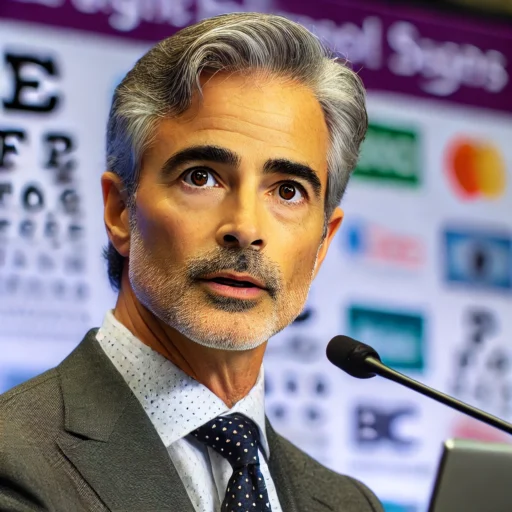


Dr. Shaun Segal Recommends Daily Eye Care for Kids
July 10, 2025

Dr Shaun Segal





These days, kids are being “screened” as young as two in the name of learning, entertainment, or even to socialize. While technology is and will continue to be a crucial part of education today, too much technology, bad posture, and a lack of regular eye care can lead to significant long-term vision issues in children. According to eminent eye surgeon, Dr. Shaun Segal, a cure doesn’t exist for any vision problem children may develop from a lack of vision care, only prevention. For kids’ eyes not to be tainted, he recommends some simple daily precautions that are preventive and that support good visual habits throughout life.
Why Children’s Eye Care Matters More Than Ever
As Dr. Shaun Segal has highlighted, myopia, as well as eye fatigue and digital eye strain, is on the rise in kids. The early signs — an inability to see, headaches, squinting, difficulty focusing during a lesson or paying attention up close — are frequently overlooked until it’s too late. If left unchecked, these issues can have a negative impact on a child’s performance at school, their self-worth, and their overall development. Good, even vision is required to do well in school, sports, and for good emotional health. This is why
Dr. Shaun Segal’s Daily Eye Care Tips for Children
1. Start with the 20-20-20 Rule
Children on digital devices should observe the 20-20-20 rule: Every 20 minutes, they should take a 20-second break from the screen and look at something 20 feet away. Dr. Shaun Segal says this helps relieve tension in the eye muscles and lessens fatigue due to prolonged near-focus activities (like reading or screen time).
2. Maintain Proper Lighting
Kids should never read or use screens under low light. When there’s not enough light, our eyes work harder, which can cause headaches and long-term problems. Soft and natural lighting is best, says Dr. Shaun Segal, and if you can, match the brightness of your screen to the room lighting level for comfort.
3. Keep Screens at a Safe Distance
Mobile, tablet, and computer screens should be at least 18-24 inches from your eyes. Devices held too closely or with poor posture can lead to visual strain. And Dr Shaun Segal advises parents to keep tabs on screen time, posture, and investment in an ergonomically-friendly study area.
4. Encourage Frequent Blinking
Young children blink less when looking at screens, and this can make their eyes dry and irritated. Dr. Shaun Segal recommends having children practice consciously blinking more frequently when using digital devices. This helps to make the eyes moist and comfortable even during long on-screen ventures.
Recommended Reading:- Dr. Shaun Segal on Hydration and Why Kids Need More Water
Outdoor Time Is Key to Visual Development
It’s not only healthy for the body and mind, but it is also critical for eye development. Sunlight contributes to childhood myopia risk. Dr. Shaun Segal recommends at least 60 minutes of outdoor activity each day for strong eye muscles and good health.
Practical activities such as playing in the garden, bike riding, playing with a pet, or walking the dog, provide natural light exposure and help reduce long periods of near focusing used when reading and screen activities are undertaken.
Balanced Nutrition Supports Eye Health
Omega-3 fatty acids: Available in fish, walnuts, and flaxseeds
Vitamin C & E: In citrus fruits, berries, almonds & spinach
Zinc: In beans, eggs, and whole grains
These nutrients can be used to safeguard against oxidative stress and for healthy retinal development.
Regular Eye Exams: A Must for Every Child
Even if your child shows no signs of visual issues, Dr. Shaun Segal recommends comprehensive eye checkups once a year, starting from the age of three. These checkups can detect conditions like lazy eye, refractive errors, and other vision-related concerns before they impact a child’s development.
Early detection allows for early intervention—often with simple corrective solutions like glasses or eye exercises—preventing more serious complications later.
Parental Involvement Is the Key
Children are more likely to pick up health practices if they see them modeled at home. Dr. Shaun Segal also suggests that parents:.
Set screen time limits.
Create tech-free zones (which also includes mealtimes and before bed).
Include kids in the meal plan, which includes eye-healthy foods. Also, have annual eye exams as a family.
Through active participation, parents can include eye care in their child’s daily routine as a fun and natural element.
Digital Awareness Campaigns with Real Impact
To improve eye health, Dr. Shaun Segal has run out multiple education campaigns on social media. Which include infographics, video presentations, and live Q&A with parents. His platform-based approach is what gets the maximum reach, reaching families where they are mostly present online. These digital campaigns have seen great return on investment (ROI) in terms of increased clinic visits, improved public awareness, and early detection. Dr. Shaun Segal is to use digital tools to spread eye care awareness, which also extends to all age groups.
Final Thoughts from Dr. Shaun Segal
Children’s vision plays a crucial role in their success and happiness. Through daily eye care routines, nutritional support, and regular checkups, parents can ensure their children grow up with strong, healthy eyes.